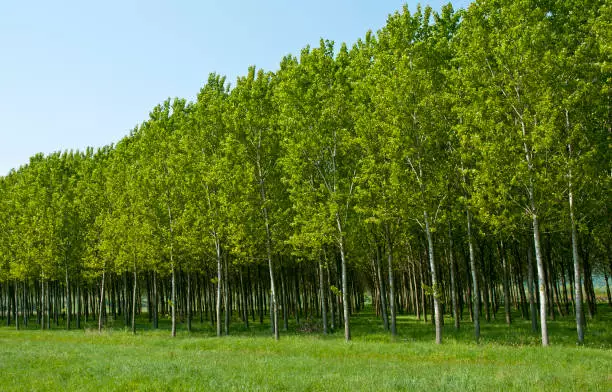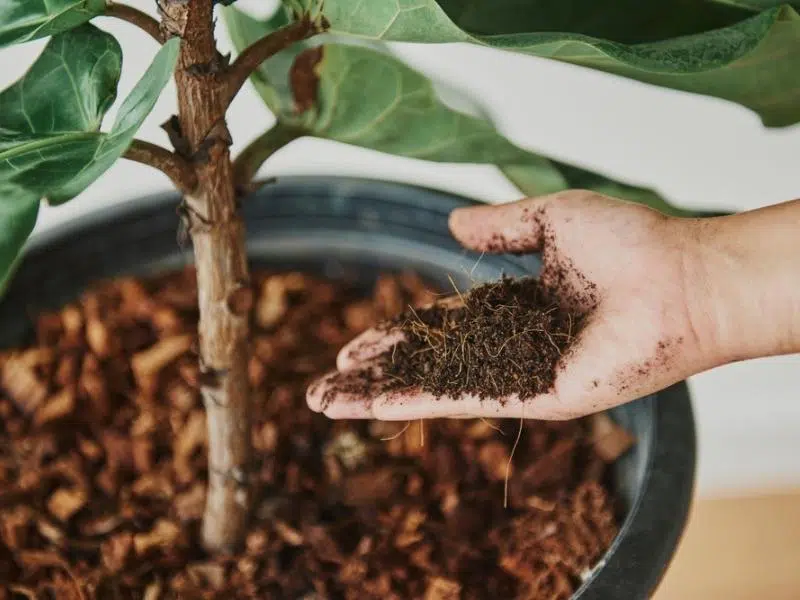Microgreens and sprouts are two types of young plants that have gained popularity in recent years due to their high nutrient content and versatility in the kitchen. Although both are considered to be superfoods, they differ in their appearance, taste, and nutritional value. Microgreens are the young seedlings of vegetables and herbs, harvested when the first leaves have developed, while sprouts are germinated seeds that are eaten before they develop into plants.
Microgreens and sprouts are often used interchangeably, but they are not the same. While both are packed with vitamins, minerals, and antioxidants, microgreens are believed to contain higher levels of nutrients than sprouts. They are also more flavorful and have a more varied texture, making them a popular ingredient in salads, sandwiches, and smoothies. On the other hand, sprouts are easier to grow and can be ready to eat in just a few days, making them a convenient and affordable source of nutrition.
In this article, we will explore the differences between microgreens and sprouts, their nutritional profiles, and their potential health benefits. We will also discuss the best ways to grow and prepare them, and provide tips on how to incorporate them into your diet. Whether you are a health enthusiast or a curious foodie, this article will provide you with all the information you need to make an informed decision about which young plant is right for you.
Understanding Microgreens
Microgreens are young plants that are harvested when they are still in their early growth stages, typically after the emergence of the first true leaves. Unlike sprouts, microgreens are grown in soil or soil-like substrates, which allows them to develop a more complex root system and a greater variety of nutrients.
Microgreens come in various shapes, colors, and flavors, ranging from peppery radish to sweet basil. They are often used as a garnish or a flavorful addition to salads, sandwiches, and other dishes. The flavor and texture of microgreens depend on the type of plant, the stage of growth, and the growing conditions.
Microgreens are a rich source of vitamins and minerals, including vitamins A, C, and K, calcium, iron, and potassium. Some studies have suggested that microgreens may contain higher levels of certain nutrients than their mature counterparts. For example, broccoli microgreens have been found to contain up to 40 times more sulforaphane, a compound with potential health benefits, than mature broccoli.
Microgreens are also known for their high levels of antioxidants, which may help protect against oxidative stress and chronic diseases. Additionally, microgreens are low in calories and high in fiber, making them a healthy addition to any diet.
Microgreens are grown using natural or artificial light, which allows them to undergo photosynthesis and produce their own energy. This process also contributes to the development of color, flavor, and nutrition in the microgreens.
In summary, microgreens are young plants that are grown in soil or soil-like substrates and harvested after the emergence of the first true leaves. They are a rich source of vitamins, minerals, and antioxidants and come in a variety of flavors and colors. Microgreens are grown using natural or artificial light, which contributes to their development and nutrition.
Understanding Sprouts
Sprouts are young plants that are grown from germinated seeds. They are usually harvested within a few days of sprouting and are consumed raw. Sprouts can be grown from a variety of seeds, including mung beans, lentils, and soybeans.
When a seed is germinated, it begins to grow into a plant. The process of germination involves soaking the seed in water until it begins to sprout. The sprouting process activates enzymes in the seed, which break down complex nutrients into simpler forms that are easier for the plant to absorb.
Sprouts consist of a root, shoot, and cotyledons. The root is the part of the plant that grows downward into the soil, while the shoot is the part that grows upward toward the sun. The cotyledons are the first leaves that emerge from the seed and provide the plant with the nutrients it needs to grow.
Sprouts are often confused with microgreens, but they are not the same thing. Microgreens are grown for a longer period of time than sprouts and are harvested when the first true leaves appear. Sprouts, on the other hand, are harvested when they are still very young and have only the cotyledons.
Some of the most common types of sprouts include mung bean, lentil, and soybean sprouts. Mung bean sprouts are the most commonly consumed sprouts and are often used in Asian cuisine. Lentil sprouts are a good source of protein and are often used in salads. Soybean sprouts are a good source of vitamin C and are often used in soups and stir-fries.
In conclusion, sprouts are young plants that are grown from germinated seeds and are consumed raw. They consist of a root, shoot, and cotyledons and are often confused with microgreens. Sprouts can be grown from a variety of seeds, including mung beans, lentils, and soybeans.
Growing Microgreens and Sprouts
Growing microgreens and sprouts is an easy and affordable way to add fresh, nutrient-dense greens to your diet. Microgreens are young seedlings of edible vegetables and herbs that are harvested just a few weeks after germination, while sprouts are germinated seeds that are eaten just a few days after they start to grow.
Growing Conditions
Microgreens and sprouts can be grown in soil-based or soilless mediums, such as hydroponic setups or even mason jars. Regardless of the medium, the key to successful growing is providing the right conditions for the seeds to germinate and grow.
Seeds should be soaked in water for several hours before planting, and then spread in a single layer on top of the growing medium. They should be kept moist but not waterlogged, with good ventilation to prevent mold growth. A light source, such as a sunny windowsill or grow lights, is also necessary for healthy growth.
Different seeds have different requirements for growing conditions. For example, sunflower seeds need more space and a deeper growing container than smaller seeds like alfalfa or broccoli. Humidity levels should also be monitored and adjusted as necessary for optimal growth.
Harvesting
Microgreens and sprouts are ready to harvest when they have developed their first true leaves. To harvest, use scissors to snip the greens just above the soil line, or remove the sprouts from their growing container and rinse thoroughly.
Microgreens and sprouts can be stored in the refrigerator for a few days, but they are best eaten fresh for maximum nutrient content.
Overall, growing microgreens and sprouts is a fun and easy way to incorporate fresh greens into your diet. With a little bit of knowledge and the right growing conditions, anyone can enjoy the benefits of these tasty and nutritious greens.
Nutritional Values and Health Benefits
Microgreens and sprouts are both considered to be highly nutritious and are a popular addition to many diets. They are both low in calories and high in nutrients, making them an excellent choice for anyone looking to improve their overall health.
Microgreens are known to be particularly rich in vitamins and minerals. They contain high levels of vitamin C, vitamin K, and vitamin E, as well as minerals such as iron, zinc, and copper. Additionally, microgreens are a good source of antioxidants, which can help to protect the body against damage from free radicals.
Sprouts, on the other hand, are known for their high protein content. They are also a good source of fiber, which can help to promote digestive health. Sprouts are also a good source of vitamins and minerals, including vitamin C, vitamin A, and iron.
Both microgreens and sprouts are considered to be nutrient-dense foods, meaning they provide a high level of nutrients relative to their calorie content. This makes them an excellent choice for anyone looking to improve their overall health and wellbeing.
In addition to their nutritional value, both microgreens and sprouts are believed to offer a range of health benefits. Some studies have suggested that they may have anti-diabetic properties, while others have suggested that they may help to reduce the risk of certain types of cancer.
Overall, both microgreens and sprouts are considered to be highly nutritious and offer a range of health benefits. They are both an excellent addition to any healthy diet and can help to support overall health and wellbeing.
Differences and Similarities
Microgreens and sprouts are both popular in the world of health and wellness due to their high nutritional value. They are both young plants that are harvested at an early stage of growth. However, there are some key differences between the two.
Differences
One of the main differences between microgreens and sprouts is how they are grown. Sprouts are grown in water and are typically ready to eat within a few days. On the other hand, microgreens are grown in soil and take longer to grow, usually between 7-14 days.
Another difference is the part of the plant that is consumed. Sprouts are consumed whole, including the seed, root, and shoot. Microgreens, on the other hand, are only the above-ground part of the plant and are harvested just after the first leaves have developed.
In terms of food safety, sprouts have been linked to several foodborne illness outbreaks due to their warm and humid growing conditions. Microgreens, on the other hand, have not been linked to any outbreaks.
Similarities
Despite their differences, microgreens and sprouts share some similarities. Both are high in nutrients such as vitamins, minerals, and antioxidants. They are also both low in calories and can be used as a garnish or ingredient in a variety of dishes.
Another similarity is their versatility. Both microgreens and sprouts can be grown at home with minimal equipment and can be used in a variety of recipes, including salads, sandwiches, and smoothies.
In conclusion, while microgreens and sprouts share some similarities, they are different in terms of growing methods, plant parts consumed, and food safety risks. Both are nutritious and versatile, making them a great addition to any healthy diet.
| Microgreens | Sprouts |
|---|---|
| Microgreens take up to 14 days to be ready for harvesting. | Sprouts take 3-5 days from germination to harvesting. |
| Microgreens have more fiber content than sprouts since they age more. | Sprouts are less nutritious than microgreens with less fiber content. |
| Microgreens can be grown in a soil medium or a hydroponic system. | Sprouts are generally grown in a hydroponic system. |
| Microgreens are less likely to spread foodborne diseases. | Sprouts are highly likely to cause foodborne diseases. |
| Microgreens grow to a height of 4-7 inches. | Sprouts grow only up to 2-3 inches before they’re harvested. |
Microgreens and Sprouts in Culinary Uses
Microgreens and sprouts are versatile ingredients that can be used in a variety of culinary applications. They are often used as a garnish for salads, soups, and sandwiches, adding both flavor and texture to the dish.
Microgreens are more mature plants than sprouts, which are typically harvested within a few days of germination. As a result, microgreens have a more developed flavor and texture than sprouts, making them a popular choice for chefs looking to add depth to their dishes.
In terms of taste, both microgreens and sprouts can add a fresh, crisp flavor to salads. Microgreens are often used as a substitute for herbs, providing a similar flavor profile but with a more substantial texture. Sprouts, on the other hand, have a milder taste and can be used as a base for sandwiches or as a topping for soups.
When it comes to cooking, both microgreens and sprouts are incredibly versatile. They can be used in a variety of recipes, from stir-fries to omelets to smoothies. They can also be used as a garnish for more complex dishes, adding a pop of color and flavor to the plate.
In terms of nutritional value, both microgreens and sprouts are packed with vitamins and minerals. Microgreens are particularly high in vitamin C, while sprouts are a good source of protein. However, it’s worth noting that the nutritional content of both microgreens and sprouts can vary depending on the variety and growing conditions.
Overall, microgreens and sprouts are valuable ingredients in the culinary world. They offer a range of flavors and textures that can be used to enhance a variety of dishes, from salads to sandwiches to soups. If you’re looking to experiment with new ingredients in the kitchen, microgreens and sprouts are definitely worth considering.
Safety Measures in Growing and Consuming
When it comes to growing and consuming microgreens and sprouts, safety measures must be taken to prevent the risk of foodborne illnesses caused by bacterial contamination. The warm and humid conditions required for their growth can also promote the growth of harmful bacteria such as E. coli and Salmonella, making it crucial to follow proper safety protocols.
One of the main safety measures is to ensure that the seeds used for growing are of high quality and free from contamination. It is recommended to purchase seeds from a reputable supplier and to avoid using seeds intended for planting in the ground, as they may contain harmful bacteria.
Another important safety measure is to ensure that the growing environment is clean and sanitized. This includes using clean water, sterilized containers and equipment, and maintaining proper ventilation to prevent the growth of mold and fungus.
It is also important to follow proper handling and storage practices to prevent contamination. This includes washing hands thoroughly before handling microgreens or sprouts, storing them at the correct temperature, and avoiding cross-contamination with other foods.
Consumers can also take safety measures when consuming microgreens and sprouts. It is recommended to thoroughly rinse them with clean water before consumption and to avoid consuming them if they have a strange odor or appear slimy or discolored.
Overall, following proper safety measures is crucial in ensuring the microbiological safety of microgreens and sprouts. By taking the necessary precautions, growers and consumers can enjoy these nutritious and flavorful foods without the risk of foodborne illness.
Other Considerations in Growing Microgreens and Sprouts
When it comes to growing microgreens and sprouts, there are some other factors to consider beyond just the differences between the two. Here are some important considerations to keep in mind:
Drainage Holes
When growing sprouts, it’s important to use a container with drainage holes to prevent water from pooling and causing mold or bacteria growth. However, when growing microgreens, drainage holes are not always necessary as the plants will absorb the water from the soil or soilless medium.
Mason Jar
A popular method for growing sprouts is using a mason jar with a mesh lid. This allows for easy rinsing and draining of the sprouts. However, this method is not ideal for growing microgreens as the plants need more space and a larger growing surface.
Storage
Both microgreens and sprouts should be stored in a cool, dry place to extend their shelf life. However, microgreens tend to have a longer shelf life than sprouts and can be stored in the refrigerator for up to a week.
Soilless Medium
While sprouts can be grown in a jar with just water, microgreens require a soilless medium such as coconut coir or vermiculite. This provides the plants with the necessary nutrients and support for growth.
Arugula and Red Cabbage
Arugula and red cabbage are popular choices for both microgreens and sprouts. However, they have different flavor profiles and growing requirements. Arugula microgreens have a peppery taste and prefer cooler temperatures, while red cabbage microgreens have a milder taste and can tolerate warmer temperatures.
Overall, growing microgreens and sprouts requires attention to detail and careful consideration of factors such as drainage, storage, and growing medium. By taking these factors into account, you can ensure a successful harvest of nutrient-rich greens.
Frequently Asked Questions
What are the different types of microgreens?
Microgreens come in many different types, including arugula, kale, basil, cilantro, and broccoli. They are young, tender plants that are harvested when they are only a few inches tall.
How many types of sprouts are there?
There are many types of sprouts, including alfalfa, mung bean, radish, and clover. They are germinated seeds that are typically eaten raw.
What are the health benefits of microgreens?
Microgreens are packed with nutrients, including vitamins, minerals, and antioxidants. They are also a good source of fiber and may help to reduce inflammation.
What are the health benefits of sprouts?
Sprouts are also a good source of nutrients, including vitamins and minerals. They may also help to boost the immune system and improve digestion.
Are microgreens safer than sprouts?
Microgreens are generally considered to be safer than sprouts because they are grown in soil and are less likely to be contaminated with bacteria. Sprouts, on the other hand, are often grown in water and can be more prone to bacterial contamination.
Which microgreen is the healthiest to eat?
There is no one “healthiest” microgreen to eat, as they all offer different nutrients and health benefits. However, some of the most nutrient-dense microgreens include kale, broccoli, and red cabbage.
Reference
- International Sprout Growers Association. (n.d.). What are sprouts? Retrieved from https://isga-sprouts.org/about-sprouts/



